Division of Wildlife Resources
 Why are private fish ponds regulated?
Why are private fish ponds regulated?
Private fish ponds have been popular for decades. They provide fishing fun for kids and allow pond owners to create and manage their own personal fisheries. However, without regulation, these ponds could seriously harm wild fish populations in nearby rivers, streams and lakes. Private ponds can easily introduce nonnative species and devastating diseases to drainages. For this reason, the Utah Division of Wildlife Resources (DWR) works with landowners to ensure that private pond stocking does not harm public fisheries.
What are the requirements?
A landowner can have a private fish pond if he or she meets five basic requirements:
- Constructs a pond that is not located on a natural lake, a natural flowing stream or a reservoir built on a natural stream channel.
- Adequately screens the pond to prevent the entrance of any aquatic wildlife and the exit of any aquaculture product.
- Ensures the aquaculture product is delivered to the pond by a licensed aquaculture facility.
- Obtains a valid health-approval number from the facility delivering the aquaculture product. (This number is issued by the Utah Department of Agriculture and Food, and it authorizes the aquaculture facility to culture and transport the species received at the pond.)
- Accepts only the exact species (including strain and reproductive ability) authorized for stocking in the pond.
- All private pond owners possessing a current Certificate of Registration (COR) within the guidelines of the previous private pond rule may operate within the stipulations of that COR until it naturally expires.
For more information, contact the regional fishery manager at the nearest DWR office:
Aeration systems and limiting pond nutrients will reduce algae growth and oxygen depletion.
- Cedar City: (435) 865-6100
- Ogden: (801) 476-2740
- Price: (435) 613-3700
- Salt Lake City: (801) 538-4774
- Springville: (801) 491-5678
- Vernal: (435) 781-9453
 Common questions
Common questions
What kind of fish should I stock?
The species of fish you should stock depends on your pond's size, depth and inflow. Trout rarely reproduce without flowing water, and they may not survive a hot summer if the pond is too shallow (less than 8 to 10 feet deep) or has no spring flow. Warmwater fish, such as bass and bluegill, will usually establish reproducing populations. A species that doesn't reproduce naturally might require periodic stocking but is generally easier to manage. By using sterile fish, you can protect native species and minimize the chance of introducing nonnative or hybrid populations to public waters.
What are "sterile" fish?
Sterile fish are fish that cannot reproduce. These fish are widely used by the DWR to prevent crossbreeding with native trout populations. Extensive research has proven that these fish grow as fast, fight as hard and live as long as fertile trout. Sterile fish are a valuable tool for managing fisheries in drainages with fragile populations of native fish. Many commercial growers now have sterile trout available for private fish ponds.
What causes fish kills?
Depending on the weather and your pond's vegetation, you could lose some of your fish to a fish kill. There are two types of seasonal fish kills: winter kill and summer kill.
Private Utah fish ponds
When snow and ice block sunlight from a pond, aquatic plants can no longer produce oxygen. Instead, they die and begin decomposing. These decaying plants rapidly use the pond's remaining oxygen. When oxygen levels become too low for fish survival, the phenomenon known as winter kill occurs.
Summer kills can occur in ponds with extensive algae growth. Like all plants, algae produces oxygen during the day and uses it at night. If a pond has too many nutrients, algae can build up in the summer and deplete the oxygen at night, causing a summer kill.
Nutrients that accelerate algae growth include lawn fertilizers, tree leaves and manure from waterfowl or livestock.
Note: Although herbicides can effectively kill unwanted vegetation, they do not remove nutrients from the pond and will not prevent algae blooms or fish kills.
Where can I get fish for my pond?
You can purchase fish at one of several commercial fish hatcheries located in Utah and adjacent states. The hatcheries must be approved, disease-free facilities and must be licensed by the Utah Department of Agriculture and Food (UDAF). For more information on commercial fish growers that meet these criteria, contact the UDAF at (801) 538-7029 or download information from their website. — ( format)
How do I build and manage a pond?
For general information on pond construction and management, visit these links from other states. Please note that regulations in others states sometimes differ from those in Utah.
Is there a list of approved Utah fish growers, out-of-state growers and Utah brokers?
Yes, you can download the list of approved Utah fish growers, out-of-state growers and Utah brokers. You must use the approved fish growers from the list to receive live aquaculture products in Utah. The approved fish grower will deliver directly to the site of the private pond. Note: If you need to use a broker or another delivery option, then you may need a certificate of registration for private pond owners. (For more information, call the Utah Division of Wildlife Resources at 801-538-4701). If you have any questions, contact the Utah Department of Agriculture and Food at 801-538-7046.You might also like
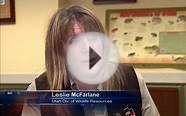
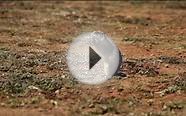

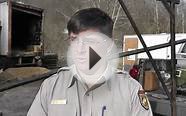
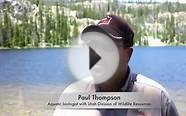
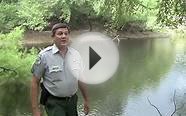
|
Field Manual of Wildlife Diseases: General Field Procedures and Diseases of Birds - Authoritative Federal Guide to Bacterial, Fungal, Viral, Parasitic Diseases, Biotoxins, Chemical Toxins eBooks (Progressive Management) |




